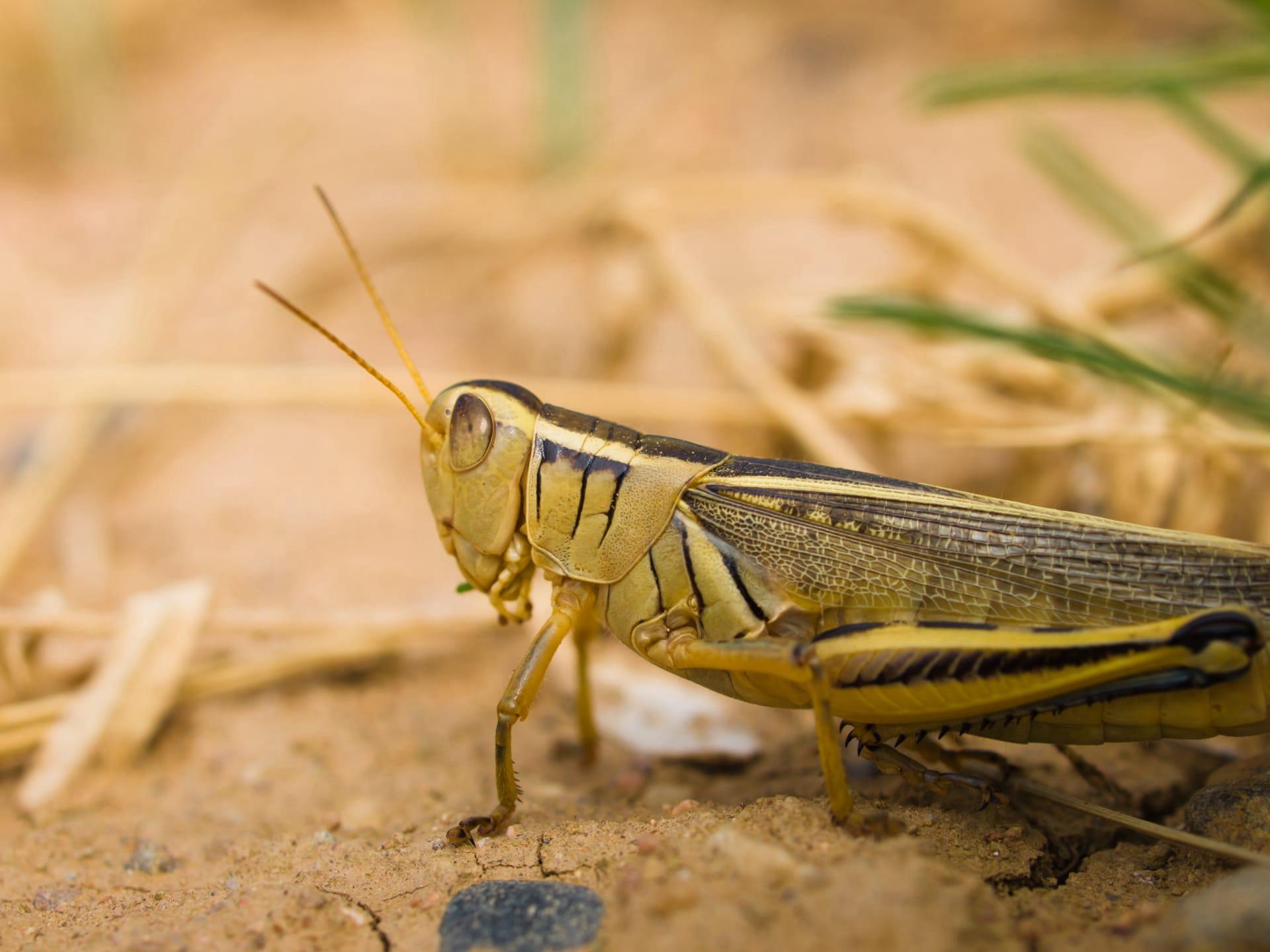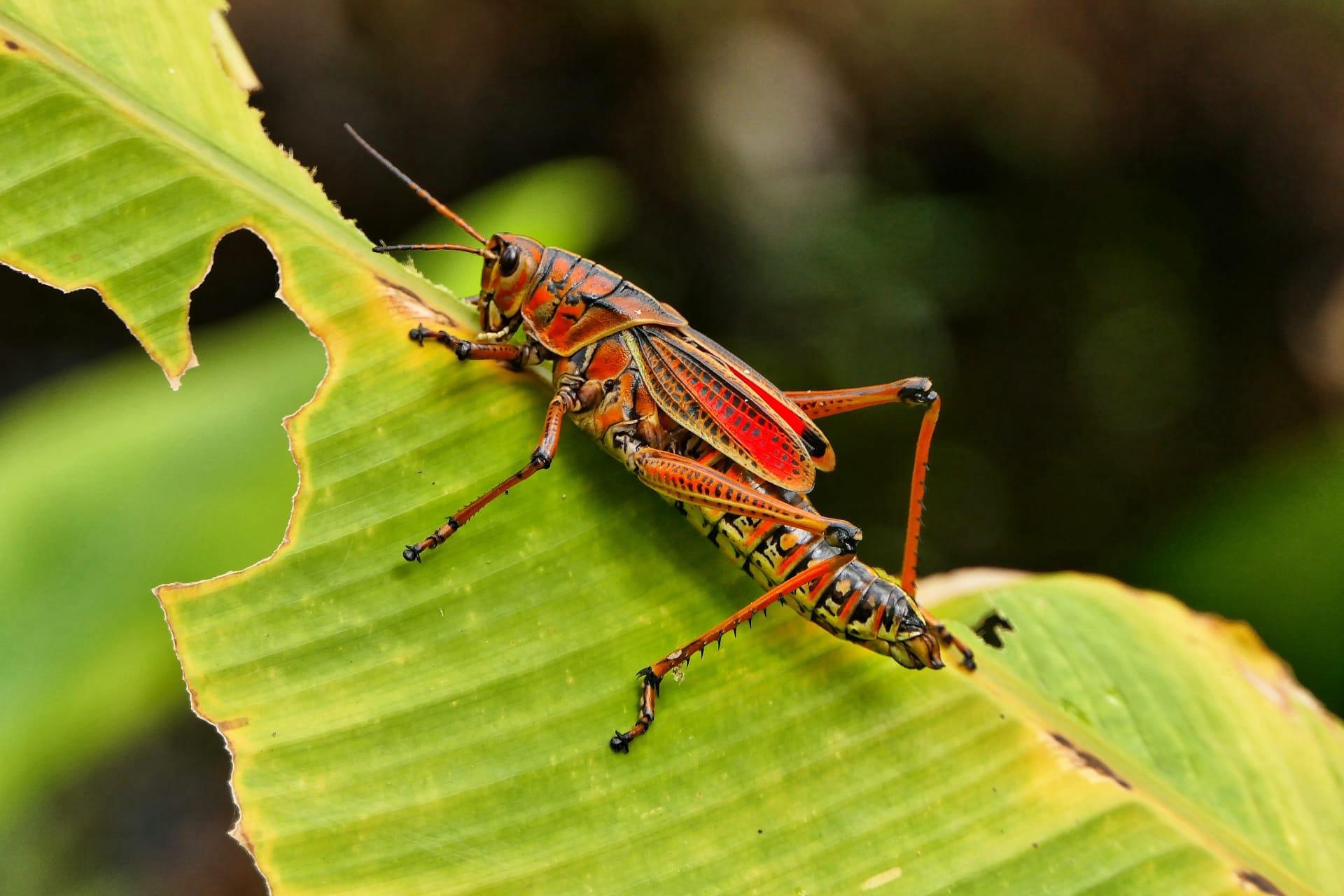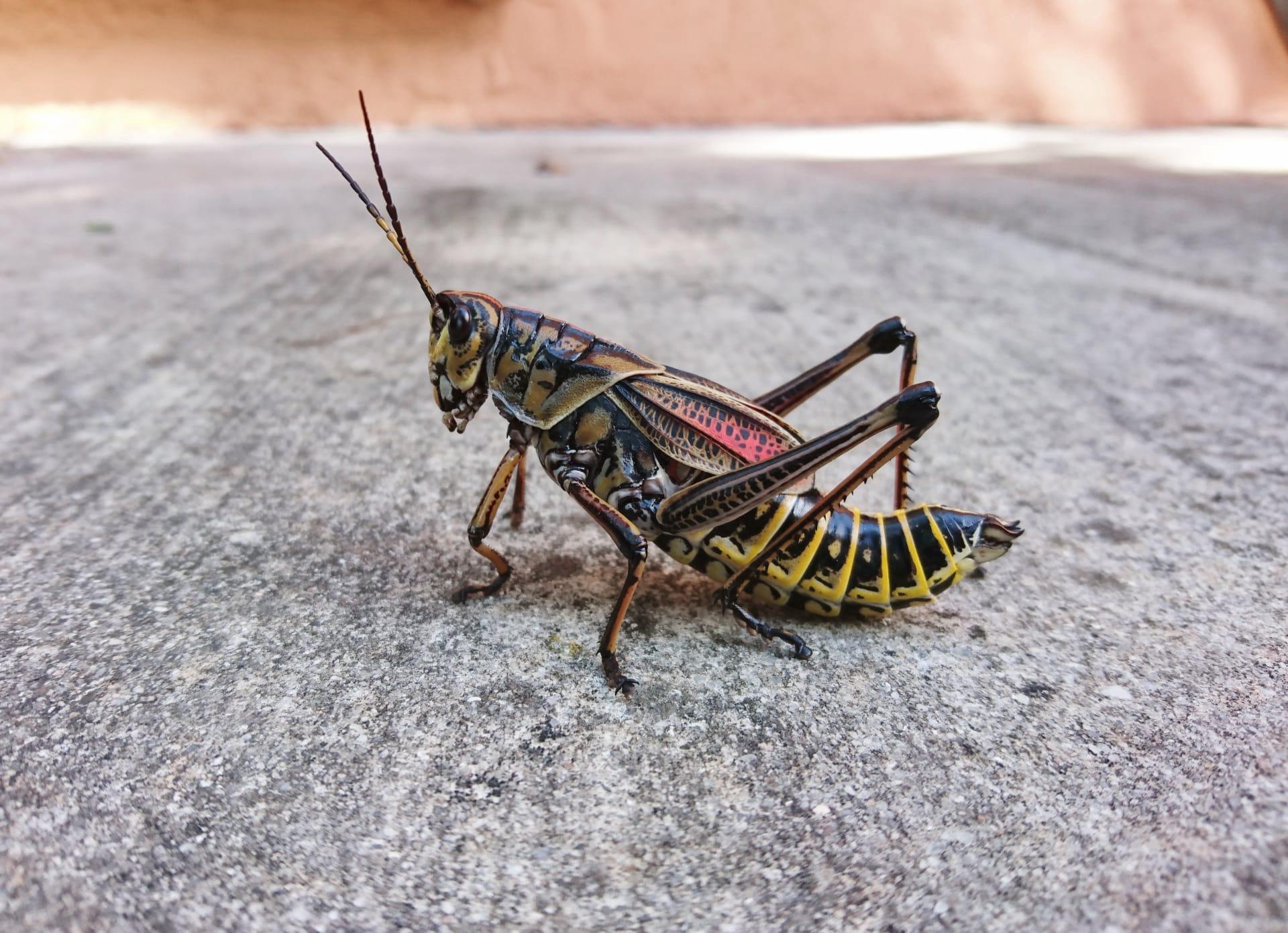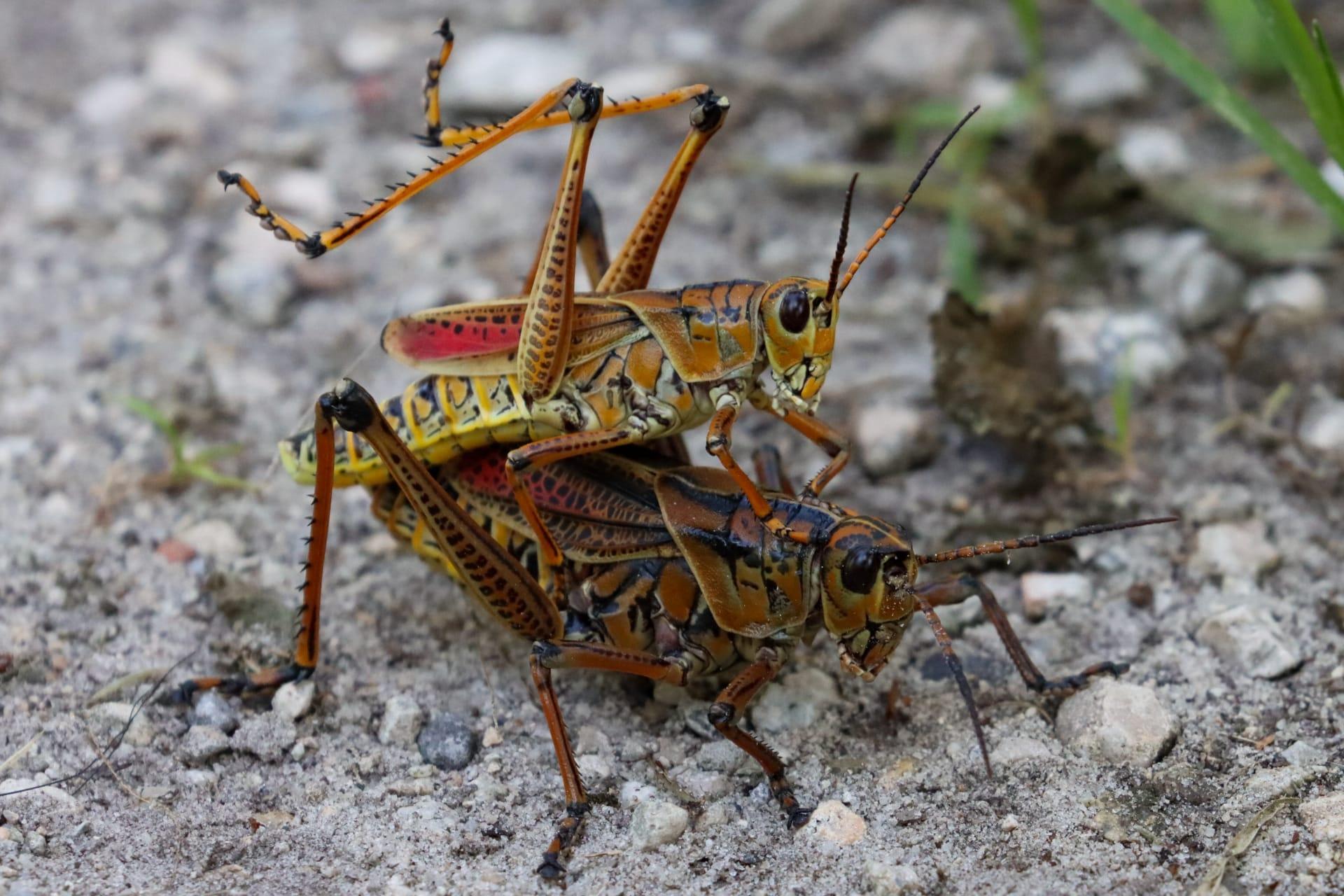1
Lubber grasshoppers, known scientifically as Romalea microptera, are a fascinating species found primarily in the southeastern United States. One of the most striking features of these insects is their size. They are among the largest grasshoppers in this region, with adults typically measuring around 2.5 to 3 inches in length. This size not only makes them easily noticeable but also plays a crucial role in their survival strategies, such as deterring predators through their intimidating appearance.
Another interesting aspect of lubber grasshoppers is their coloration. These grasshoppers exhibit a remarkable color transformation throughout their life. Nymphs (young grasshoppers) are predominantly black with a vibrant yellow or red stripe running along their bodies, making them highly conspicuous. As they mature into adults, their coloration shifts to a duller, yet still striking, combination of yellow, orange, red, and black. This vivid coloration serves as a warning to potential predators about their toxicity, a defense mechanism acquired through their diet of toxic plants.

2
The lubber grasshopper's diet is another point of interest. Unlike many other grasshopper species that have a more generalized diet, lubbers are known to feed on a variety of plants, many of which are toxic to other animals. This includes plants like oleander, milkweed, and certain lilies. Their ability to consume and store toxins from these plants not only provides them with a defense mechanism against predators but also allows them to survive in environments where food sources might be limited for other species.
Communication is a key aspect of the lubber grasshopper's behavior. While they are not known for their auditory songs like some other grasshoppers, they communicate through a series of body vibrations and movements. When threatened, they can produce a hissing sound by forcing air out of their spiracles (breathing holes). This is often accompanied by secretion of a foul-smelling froth from their thoracic segments. These defensive tactics are effective in deterring many would-be predators.

3
Lubber grasshoppers have a unique approach to locomotion. Despite having wings, they are poor fliers. Their wings are relatively short and not well-developed, making them more suited for short bursts of flight. Mostly, they prefer walking or hopping to get around. Their strong and muscular hind legs are well-adapted for hopping, allowing them to cover significant distances quickly when escaping predators or moving between food sources.
Reproduction in lubber grasshoppers is another intriguing aspect. Females lay their eggs in the soil in groups called "pods." Each pod contains around 50 to 150 eggs. The eggs are laid in late summer and overwinter in the soil, hatching the following spring. This reproductive strategy helps ensure that the young have access to abundant food sources as they emerge and begin to grow, which is crucial for their survival given their relatively large size and high nutritional requirements.

4
The lifespan of a lubber grasshopper is notably longer than many other grasshopper species. They typically live for about a year, which is quite lengthy considering most grasshoppers have a lifespan of only a few months. This extended lifespan allows them to reach their large size and also contributes to their role in the ecosystem, as they have more time to impact their environment and the species that interact with them.
Despite their toxicity and defensive mechanisms, lubber grasshoppers do have natural predators. Birds, particularly those that have developed a tolerance to their toxins, are known to prey on them. Additionally, rodents and some reptiles also feed on these grasshoppers, indicating that their defensive strategies are not foolproof and that they play a significant role in the food chain of their habitats.

5
Climate and environmental conditions play a crucial role in the development and behavior of lubber grasshoppers. They are predominantly found in warm, humid environments, which is why their population is concentrated in the southeastern United States. These conditions are ideal for their growth and reproduction, and any significant changes in climate can impact their population dynamics.
The impact of lubber grasshoppers on agriculture and plant life is noteworthy. While they are not typically considered major pests, in large numbers, they can cause significant damage to crops and ornamental plants. Their preference for certain toxic plants can be beneficial in controlling these plant populations, but it can also lead to challenges in managing them in agricultural or garden settings where they might consume desirable plants.